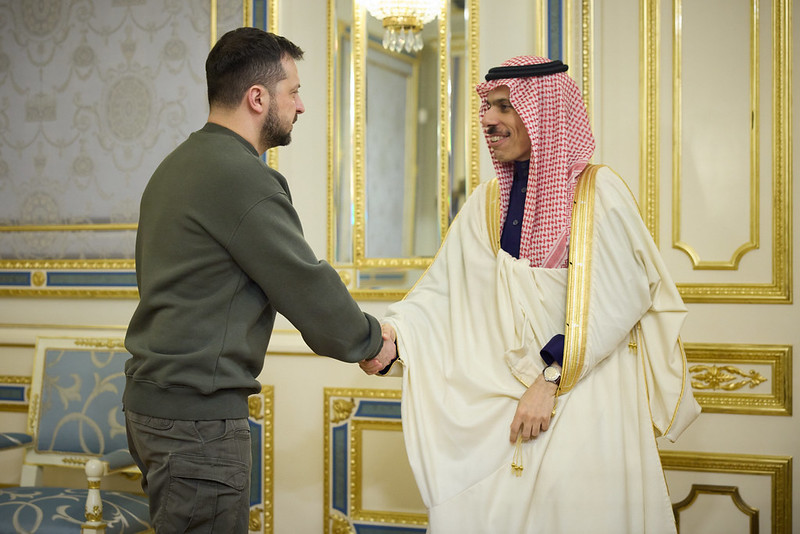With Ukraine’s counter-offensive going nowhere fast, it may not be long before the cracks in the US-led NATO alliance begin to show.
Cross-posted from Other News

The Saudi Arabia-sponsored “peace talks” failed to accomplish anything. Ukraine was hoping to bring on board more “neutral” countries supporting Ukraine’s policy. That didn’t happen, and the Ukrainians were no doubt disappointed that the big Saudi sponsored dog and pony show failed to do anything to help Ukraine objectively.
Russia, of course, did not attend because Russia was not invited. Had Russia been invited, Ukraine would not have shown up, so the die was cast right from the start: No Russia, no peace.
The 40 countries in attendance could not agree on a common statement, so the “peace conference” ended without any statement on its alleged accomplishments or any declaration for a way forward.
The meeting in Jeddah, Saudi Arabia no doubt was designed by the United States to try and convince the BRICS countries to not support Russia on Ukraine. BRICS consists of Russia, Brazil, India, China and South Africa with a number of other countries applying for membership.
Brazil, India, China and South Africa attended the peace conference, which also included Iran. China said that the conference was useful and that it hoped to see another conference in the future. China has been posing as a mediator in the Ukraine-Russia dispute.
China could be regarded as a swing country were a peace agreement to be reached in a consensus without Russia. But that is a far fetched proposition, and China is playing the game to keep the US from pressuring it further with sanctions.
Should the economy continue to crumble, and as more and more foreign investors decouple from China, Xi’s future is uncertain and dark clouds circle over the faltering Chinese Communist regime.
Even before the Russian invasion of Ukraine, the US had steadily opposed any negotiations with Russia on Ukraine. Attempts by France and Germany, Turkey and Israel have all been blown out of the water by US objections to any deals. US policy, insofar as it can be determined by its actions, is to help Ukraine win the war against Russia while the US did its utmost to provoke regime change in Russia.
Two things are now clear: The effort to overthrow the Putin government in Russia appears to have failed with Putin seemingly back in firm control. Meanwhile, the Ukrainian counter offensive against Russian forces in eastern and southern Ukraine has proven to be a costly failure, and that failure, in turn, has repercussions in NATO.
Despite heavy training by NATO of Ukraine’s top brigades – and the supply of US and European weapons, including armored systems such as Leopard tanks and Bradley infantry fighting vehicles, plus US military planning and organization, including massive tactical intelligence support – Ukraine’s forces have taken a heavy beating. Ukraine did not achieve any significant breakthrough.
How does this play out in NATO? It has long been understood that NATO would have grave difficulty defending critical parts of the Baltics and Eastern Europe from a Russian attack. NATO’s expansion was always a military risk.
The idea of trying to add Ukraine to the NATO portfolio and depriving Russia of its markets throughout Europe has done at least as much damage to Europe as it has to Russia – perhaps more. For example, the era of cheap energy for Germany, fueling German industrial power, has ended, and the critical Nordstream pipeline, at least for the foreseeable future, has been destroyed.
Some experts talk about the de-industrialization of Germany. Germany has always obtained its security on the cheap, by letting the US provide the security while German companies made a lot of money. Today, however, German companies are not making a lot of money and the US has all but run out of military supplies to backstop the Germans.
Now the NATO countries are starting to understand that their best equipment is not enough to protect them in case of war.
At some point in the not too distant future, key European countries will back away from their enthusiastic support for Ukraine and NATO expansion, and from billions of dollars of military equipment consumed in the war, and seek an accommodation with the Russians. While it is possible for Washington to intimidate Scholtz in Germany or Macron in France, intimidation has its limits.
The battlefield situation in Ukraine is highly unfavorable to Ukraine’s future. Ukraine’s army leaders know that, even if they hope for some miracle. Probably Ukraine can try and keep the line of contact somewhat stable, by mounting small (but costly) attacks, as it just attempted to do (and failed) in Robotyne. The question, though, is how long the Ukrainian army can continue to burn equipment and manpower, or even if it any longer wants to do so.
Should Ukraine’s top military leaders, such as chief of staff Valerii Zaluzhny or head of the ground forces Oleksandr Syrskyi, decide they want to head off a complete collapse, they may find a way to force Ukraine’s political leaders to drop their hard line and negotiate with Russia.
It isn’t clear how close we are to a complete collapse in Ukraine, but the large numbers of casualties and losses of equipment and sagging morale leave the impression that a day of reckoning is not far off.
The failure of the Saudi “Peace Conference” is another good indicator that Washington is at a dead end and the Ukrainians may have to find a new way to solve their problem with Russia.
Thanks to many generous donors BRAVE NEW EUROPE will be able to continue its work for the rest of 2023 in a reduced form. What we need is a long term solution. So please consider making a monthly recurring donation. It need not be a vast amount as it accumulates in the course of the year. To donate please go HERE.


Be the first to comment